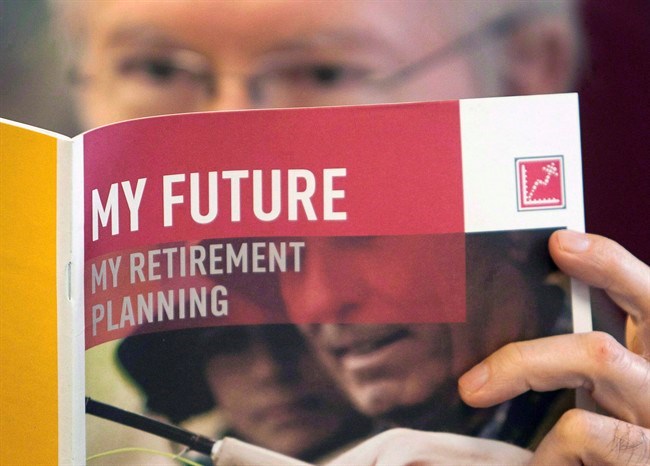(Special) - Many Canadians are under the impression that they will make the decision when they retire.
That assumption, however, may not turn out to be true. Chances are they just might find they are unexpectedly thrust into retirement sooner than they think, and when that happens, they might not be prepared financially.
A recent poll by RBC found that although 85 per cent of pre-retired Boomers with financial assets of more than $100,000 or more believe they will have the choice of when they retire, only 62 per cent actually did have the choice of deciding when they retired.
In fact, only 20 per cent of retired Boomers knew one month or less before their actual retirement that they were going to retire and 42 per cent had less than six months' notice.
"The surprising number of people facing unexpected retirement highlights the critical importance of starting lifestyle and financial planning early," says Roger Mannell, director of the RBC research centre at the University of Waterloo.
"Many (people) may be thinking of retirement as a vacation without yet having planned for the health, lifestyle and financial considerations of the next 20 to 30 years of their retired life," says Mannell. "Although important, vacations are only part of the mix - it's important to plan for key aspects of your day-to-day living."
For Boomers who felt that their retirement came at the right time, the majority said they wanted to enjoy an active retirement while their health was good. Being healthy was cited in the poll as the main reason for the timing of retirement ahead of having enough money or being unhappy at work.
One of the biggest challenges of retirement is knowing what you want to do during this phase of your life and then creating a regular income stream and managing cash flow to support that lifestyle when you're no longer receiving a regular paycheque.
Two basic principles apply to this challenge. One is to invest in a way to preserve capital but still achieve some growth. The other is to use money in the most tax-effective way possible.
Many people take the traditional view that they should investment for security only and not for growth. The trouble with that view is that people are living longer these days, so retirement can easily last 20 to 30 years. Capital has to grow if it is going to be able to maintain a standard of living over time.
One rule of thumb when determining how much of your portfolio should be in growth assets is to subtract your age from 100. At age70 roughly 30 per cent of your portfolio (100-70 = 30) should be committed to growth.
With this formula, the growth portion of your portfolio will decline as you get older.
Some other investment-in-retirement considerations include maintaining the purchasing power of your money against the ravages of inflation and managing market volatility.
Some financial experts suggest covering your basic living needs with guaranteed sources such as the Canada Pension Plan, Old Age Security, registered pension, annuities, Guaranteed Investment Certificates (GICs), and government bonds, and funding cash flow requirements for up to five years through funded through fixed income sources such as GICs and government and corporate bonds. Equities will make up the portion of your portfolio that you will not require for at least the next five years.
It's also important to manage market volatility and protect the downside risk to avoid the double whammy of withdrawing money from a portfolio to support lifestyle when it is losing money.
In deciding your investments, consider liquidity. The less liquid the less risk there is, but you want to have some liquidity in case economic or market circumstances change.
Typically, a low- to moderate risk portfolio would consist of a maximum of 25 per cent to 50 per cent in equities with some exposure to preferred shares, as they are very tax efficient and rank higher in security than most equities, 30 per cent to 40 per cent in corporate bond funds and the balance in government bonds, GICs and money market funds.
More aggressive investors can add a little more zip to their portfolio with 50 per cent to 60 per cent equities and some exposure to commodities, specific sectors and countries.
Many people think that a financial adviser is only for the wealthy. That's not the case and it's never too late to start the planning process. Whether you are leaving the workplace, heading into retirement or need help with managing your finances, a financial planner can help.
Talbot Boggs is a Toronto-based business communications professional who has worked with national news organizations, magazines and corporations in the finance, retail, manufacturing and other industrial sectors.
Copyright 2013 Talbot Boggs
